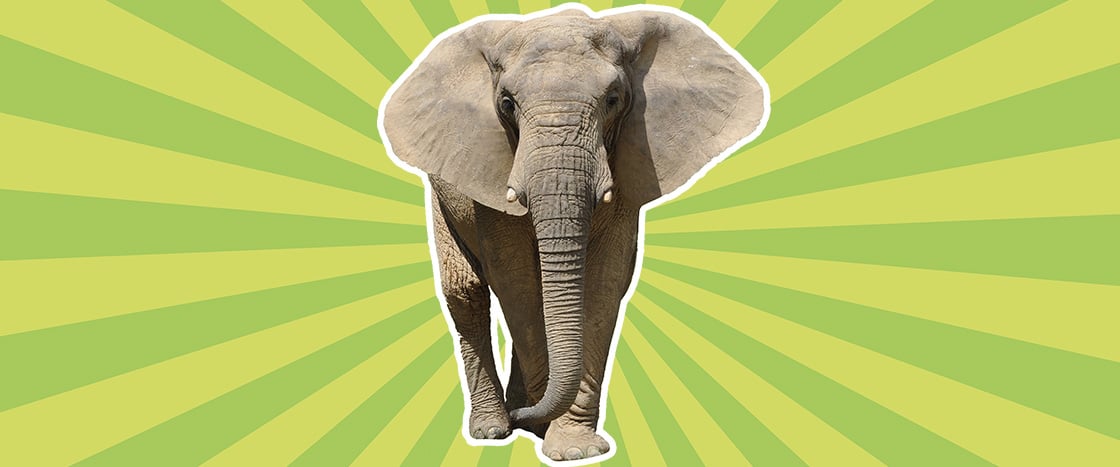An excited hush falls over the audience in the red-and-white circus tent.
It’s May 2000 in St. Louis, Missouri, and the show is about to begin. Red velvet curtains slowly part, revealing the entrance to the stage. The crowd erupts into cheers. Finally, here’s the famous performer everyone came to the circus to see. The star of the show: Flora the elephant!
The massive creature lumbers into the ring in the center of the tent. Next to her is her caretaker, David Balding. At last, it’s showtime.
The elephant catches a flying bowling pin with her long, powerful trunk. She circles around the ring as a clown sits high up on her back. Acrobats leap 8 feet into the air over her towering body.
After about two hours, Flora raises a red handkerchief in her trunk and waves goodbye. The audience claps and whoops as she leaves the stage. And why wouldn’t they? To the untrained eye, Flora has just given a spectacular performance.
But a closer look might have revealed something else about her: a faraway expression in her eyes. A nervous swish of her whiplike tail.
To anyone who knows elephants, including Balding, the signs are clear: Something is wrong with Flora.
The excited audience in the circus tent goes quiet.
It’s May 2000 in St. Louis, Missouri. The show is about to begin. Red curtains part, showing the entrance to the stage. The crowd cheers. Finally, here’s the famous performer everyone came to the circus to see. The star of the show: Flora the elephant!
The huge creature walks into the center of the tent. Next to her is her caretaker, David Balding. At last, it’s time for the show.
The elephant catches a flying bowling pin with her trunk. Acrobats jump 8 feet into the air over her body.
After about two hours, Flora raises a red scarf in her trunk. She waves goodbye. The audience claps as she leaves. And why wouldn’t they? To most people, it seems Flora has just given an amazing performance.
But a closer look might have shown something else about her: a sad look in her eyes. A nervous swish of her tail.
To anyone who knows elephants the signs are clear: Something is wrong with Flora.


